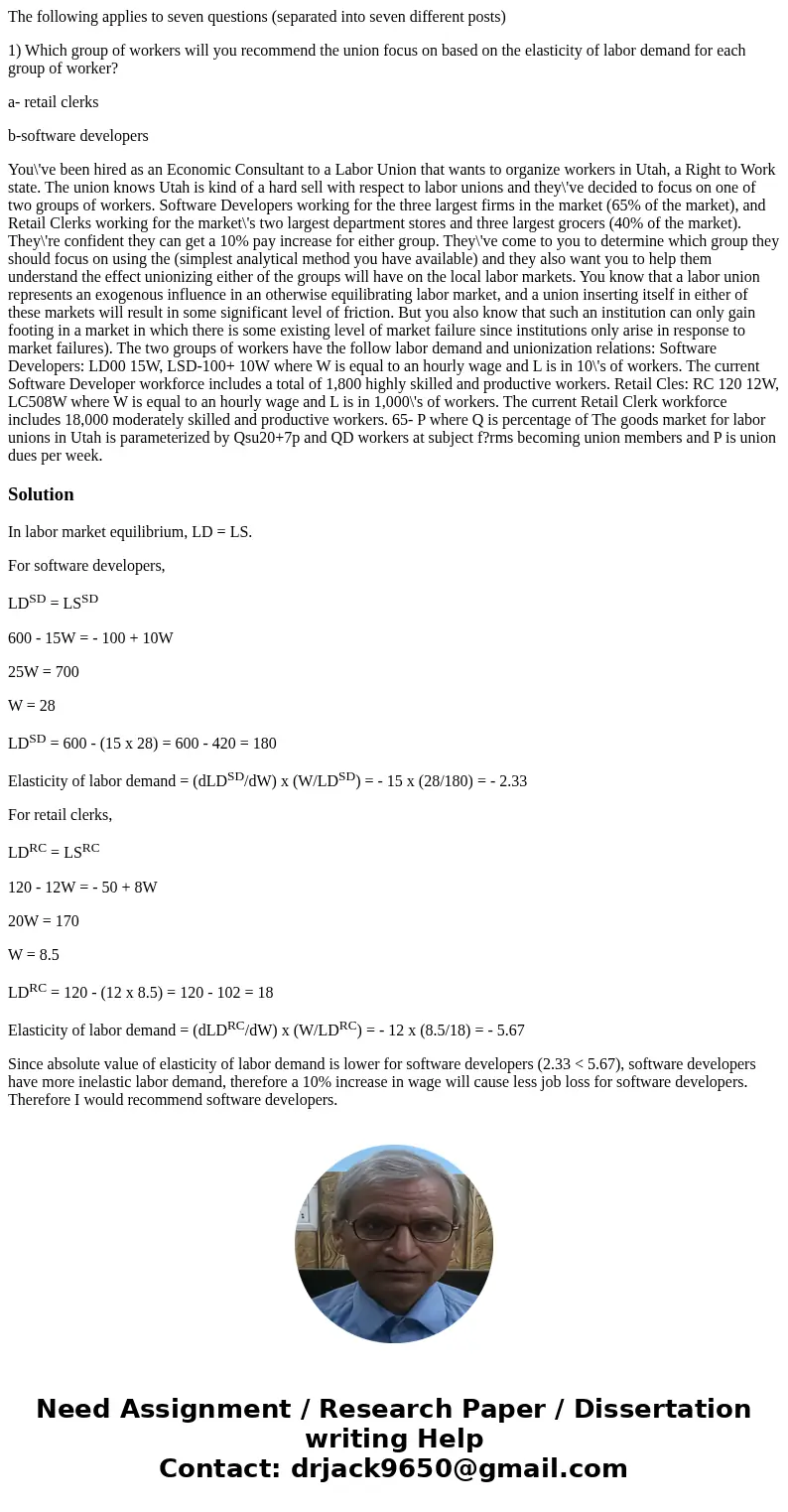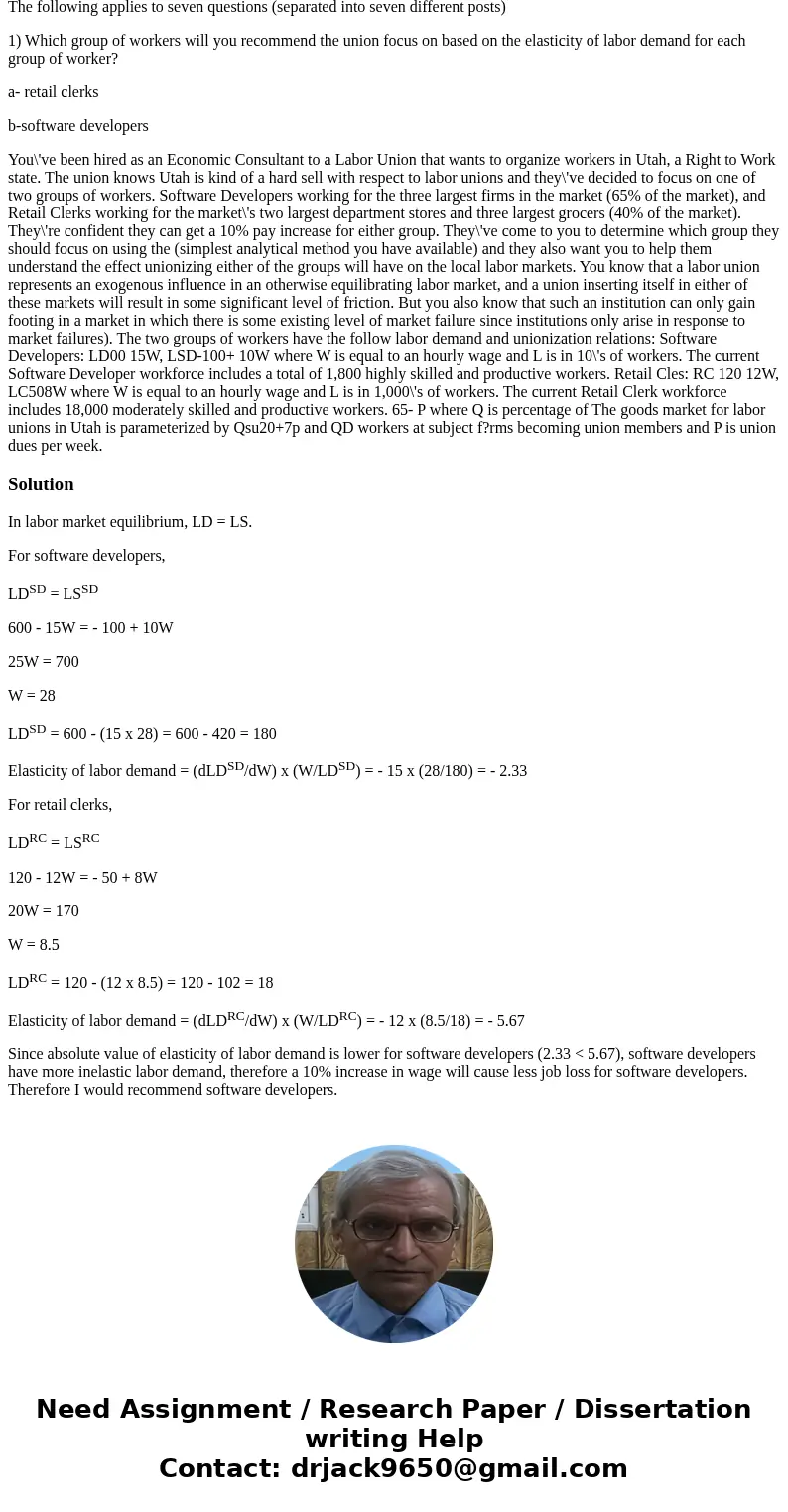The following applies to seven questions separated into seve
The following applies to seven questions (separated into seven different posts)
1) Which group of workers will you recommend the union focus on based on the elasticity of labor demand for each group of worker?
a- retail clerks
b-software developers
You\'ve been hired as an Economic Consultant to a Labor Union that wants to organize workers in Utah, a Right to Work state. The union knows Utah is kind of a hard sell with respect to labor unions and they\'ve decided to focus on one of two groups of workers. Software Developers working for the three largest firms in the market (65% of the market), and Retail Clerks working for the market\'s two largest department stores and three largest grocers (40% of the market). They\'re confident they can get a 10% pay increase for either group. They\'ve come to you to determine which group they should focus on using the (simplest analytical method you have available) and they also want you to help them understand the effect unionizing either of the groups will have on the local labor markets. You know that a labor union represents an exogenous influence in an otherwise equilibrating labor market, and a union inserting itself in either of these markets will result in some significant level of friction. But you also know that such an institution can only gain footing in a market in which there is some existing level of market failure since institutions only arise in response to market failures). The two groups of workers have the follow labor demand and unionization relations: Software Developers: LD00 15W, LSD-100+ 10W where W is equal to an hourly wage and L is in 10\'s of workers. The current Software Developer workforce includes a total of 1,800 highly skilled and productive workers. Retail Cles: RC 120 12W, LC508W where W is equal to an hourly wage and L is in 1,000\'s of workers. The current Retail Clerk workforce includes 18,000 moderately skilled and productive workers. 65- P where Q is percentage of The goods market for labor unions in Utah is parameterized by Qsu20+7p and QD workers at subject f?rms becoming union members and P is union dues per week.Solution
In labor market equilibrium, LD = LS.
For software developers,
LDSD = LSSD
600 - 15W = - 100 + 10W
25W = 700
W = 28
LDSD = 600 - (15 x 28) = 600 - 420 = 180
Elasticity of labor demand = (dLDSD/dW) x (W/LDSD) = - 15 x (28/180) = - 2.33
For retail clerks,
LDRC = LSRC
120 - 12W = - 50 + 8W
20W = 170
W = 8.5
LDRC = 120 - (12 x 8.5) = 120 - 102 = 18
Elasticity of labor demand = (dLDRC/dW) x (W/LDRC) = - 12 x (8.5/18) = - 5.67
Since absolute value of elasticity of labor demand is lower for software developers (2.33 < 5.67), software developers have more inelastic labor demand, therefore a 10% increase in wage will cause less job loss for software developers. Therefore I would recommend software developers.


 Homework Sourse
Homework Sourse